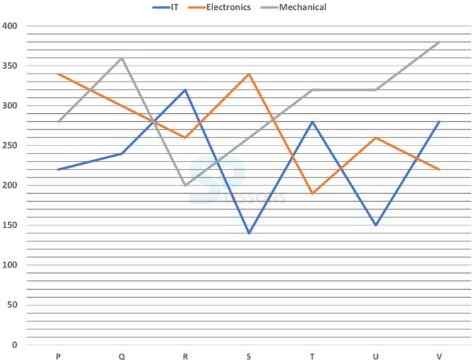 Introduction
Introduction
What is Quantitative Aptitude test?
Quantitative Aptitude is one of the prominent competitive aptitude subjects which evaluates numerical ability and problem solving skills of candidates. This test forms the major part of a number of important entrance and recruitment exams for different fields. The Quantitative Aptitude section primarily has questions related to the Simplification, Numbering Series, and Compound Interest, etc.
A candidate with quantitative aptitude knowledge will be in a better position to analyse and make sense of the given data. Quantitative Aptitude knowledge is an important measure for a prospective business executive's abilities.
The article IBPS Clerk Numerical Ability Quiz 3 provides Quantitative Aptitude questions with answers useful to the candidates preparing for Competitive exams, Entrance exams, Interviews etc.
 Quiz
Quiz
1. Abhishek divided his total saving into three parts Rs (P+1000), Rs (P+1200), Rs (P-800) and invested at the rates of 12%,10% and 8% respectively. Simple interest gets from second part is rs 500 more than that of the third part at the end of the second year. Had he invested his total saving on C.I. at the rate of 10% per annum, find the interest earned by the man after two years?
- A. 2300
B. 2500
C. 6473
D. 6381
E. 2373
- A. 20
B. 40
C. 48
D. 28
E. None of these
- A. 4.65%
B. 6.55%
C. 3.26%
D. 2.2%
E.5.5%
- A. Rs. 66000
B. Rs. 67000
C. Rs. 68000
D. Rs. 67500
E. Rs. 68500
- A. [latex]\frac {12}{36}[/latex]
B. [latex]\frac {7}{36}[/latex]
C. [latex]\frac {15}{36}[/latex]
D. [latex]\frac {11}{36}[/latex]
E. [latex]\frac {18}{36}[/latex]
Direction[1-5]: Study the line graph carefully and answer the given questions.
Strength of Seven Technology Institutes with Specializations in IT, Electronics and Mechanical in 2012.
1. If the number of students with Mechanical specialization in each institute increased by 20% and the number of students with IT specialization in each institute decreased by 10% from 2012-13, what is the difference between total mechanical student to total IT student in 2013.
- A. 1177
B. 1077
C. 1277
D. 1377
E. 1477
- A. 39 : 43
B. 39 : 44
C. 37 : 44
D. 39 : 45
E. 38 : 43
- A. 220
B. 240
C. 280
D. 210
E. 250
- A. 1028
B. 1056
C. 898
D. 1142
E. 1145
- A. 391
B. 386
C. 356
D. 360
E. 314
Direction[1-2]: In the following question two equations are given in variables X and Y. You have to solve these equations and determine the relation between X and Y.
1. I. 3[latex] {X}^{2}[/latex] + 7X = 6
II. 3[latex] {Y}^{2}[/latex] - 7Y + 2 = 0
- A. X>Y
B. X<Y
C. X≥Y
D. X≤Y
E. X=Y OR No relation can be established(CND)
- A. X>Y
B. X<Y
C. X≥Y
D. X≤Y
E. X=Y OR No relation can be established(CND)
- A. 52.73
B. 52.83
C. 65.78
D. 64.78
E. None of these
- A. 600
B. 666
C. 685
D. 765
E. None of these
- A. 8000
B. 9000
C. 10000
D. 12000
E. 14000






